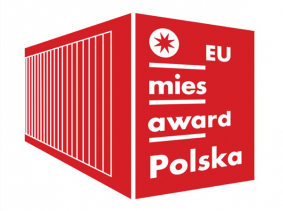
Poland in the EU Mies Award - 4DesignDays Katowice
This is the first-ever compilation of all the Polish projects ever nominated for the European Union Prize for Contemporary Architecture – Mies van der Rohe Award. As last year we had a compilation of Spanish Architectures and before one about architecture in Cyprus from the panorama depicted by the nominated works at the EU Mies Award now we take a look at the Polish architecture in the European context. Poland had their firs nominated works at the prize for the first time in 1996, thus the oldest projects have over 23 years. The exhibition depicts the transformations in the contemporary Polish architecture as through a lens using the most outstanding examples.
Polish architecture has come a long way since 1996, in comparison to other European countries. The evolution is associated with the internal political situation, and the transformation of the political and economical system accelerated new investments and changed the image of the Polish towns and villages beyond recognition. A strong participation of the society, politicians and clients influenced the far-reaching transformations.
Every year the consequences of the above-mentioned actions become increasingly clear and contemporary Polish architectural works get recognized and appreciated in Poland and abroad. In 2015 the Mieczysław Karłowicz Philharmonic Hall in Szczecin achieved a great success and received the Mies van der Rohe Award. The prize caused the world to hold the attention to the building designed by architects from the studio Barozzi Veiga. In November 2016 another building from Szczecin received the attention of architecture lovers and the world media. The Katyn Musem, designed by BBGK Architects with the cooperation of the artist Jerzy Kalina has come a long way. In 2017 the building was one of the finalists of the Mies van der Rohe competition. Additionally, the shortlist included: POLIN – Museum of the History of Polish Jews (Lahdelma & Mahlamäki Architects), Silesian Museum (Riegler Riewe Architects), Scientific Information Centre and Academic Library in Katowice (HS99), Integrated train and tram stop Wrocław-Maślice (Maćków Pracownia Projektowa), wooden church in Tarnów (Beton) and a cemetery chapel in Batowice in Cracow (Atelier Loegler Architekci).
The exhibition presented during 4 Design Days allows us to set off on a journey through space and time, through various territories, without barriers or frontiers. It allows us to enjoy the vast diversity of landscapes, nations and cultures that constitute today’s Europe.
